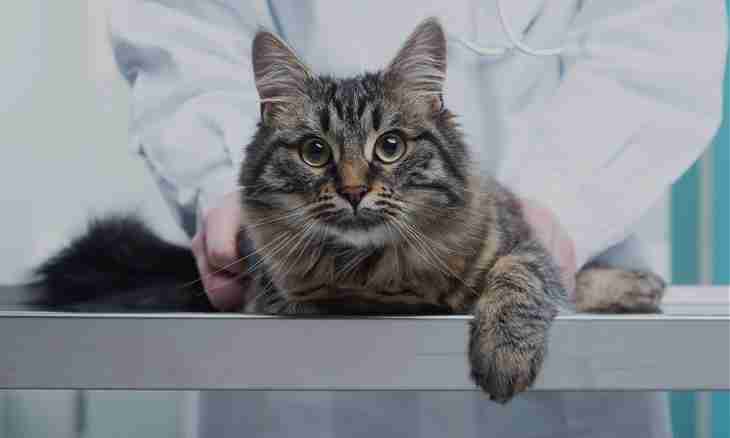Cats are likewise subject to various diseases, as well as the person. Health of these animals is affected by the following factors: ecological situation, leaving, quality of a forage, existence or lack of inoculations and many other things. To help the pet to cope with an illness, it is necessary to see in due time behind consultation the veterinarian.
Instruction
1. One of the most widespread diseases at cats – otitis. Its activators are the opportunistic fungi which are made active by microbes. Otitis symptoms: an unpleasant smell and purulent allocations from ears, reddening of an ear opening and also the increased body temperature of an animal. To cure otitis, it is necessary to carry out cleaning of an ear canal with special solutions.
2. According to experts, about 85% of cats suffer from mouth diseases. If you noticed that your alumna began to chew slowly food, and from her lower jaw saliva constantly drips, address the veterinarian. The listed symptoms can testify to such unpleasant diseases as stomatitis and periodontosis. For their prevention it is necessary to wipe a gum of a cat with the cotton tampon moistened in camomile, yarrow infusion, bark of an oak, a St. John's wort or a sage.
3. Quite dangerous cat's disease is viral rhinotracheitis (flu). It is characterized by inflammation of a mucous membrane of a nose and throat, fever, sneezing and eye infections. The causative agent of this disease – a virus of cat's herpes FHV-1. As a rule, it strikes young cats and kittens. You should not delay with treatment of rhinotracheitis as this disease can seriously weaken immunity of an animal.
4. Extremely dangerous disease at cats - panleukopenia, also known as cat's plague. This disease quite often comes to an end with the death of an animal. Panleukopenia symptoms – vomiting, a diarrhea, collapse, low temperature and dehydration of an organism. It is necessary to treat cat's plague only at the veterinarian. Treatment course usually lasts 7-14 days (depending on a condition of an animal).
5. Some invasive (connected with parasites) and infectious diseases can be transmitted from a cat to the person. Their number includes leptospirosis, rage, tuberculosis, salmonellosis, clamidiosis, toxoplasmosis, trichinosis, etc. To secure itself against infection with these diseases, it is necessary to impart in due time an animal and also to follow rules of personal hygiene.
6. If you noticed any strangenesses in behavior of the cat, surely show her to the veterinarian. Such symptoms as small appetite, the increased body temperature, the complicated breath, slackness, cough, long vomiting or a diarrhea have to guard you. Only the expert can make the exact diagnosis in this case. Your task is to follow its instructions and to provide to the alumna due care.

